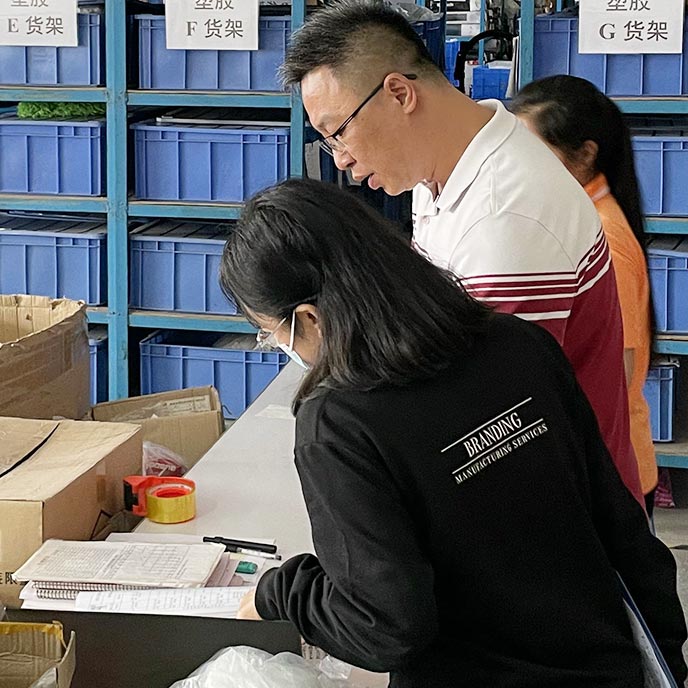Environmental Sustainability in Quality Control
Environmental Sustainability in Quality Control: Nurturing a Green Manufacturing Future
In today’s rapidly changing world, environmental sustainability has become a crucial concern for businesses across all industries. The need to reduce the environmental impact of manufacturing processes has led to the emergence of green manufacturing practices. One of the key areas where environmental sustainability plays a significant role is quality control. Here, we will explore the intersection of environmental sustainability and quality control, examining how businesses can improve both the quality of their products and their environmental impact.

Understanding Environmental Impact
Before delving into the role of environmental sustainability in quality control, it’s essential to grasp the concept. It refers to the negative effects that human activities have on the environment. This can include pollution, resource depletion, and habitat destruction, among other things. In manufacturing, the impact is closely tied to the processes and materials used to create products.
The Importance of Green Manufacturing
It is an approach that aims to minimize manufacturing processes while maximizing efficiency and product quality. It involves adopting sustainable practices and technologies throughout the product lifecycle, from design and production to distribution and disposal. It is not only beneficial for the environment but also for businesses as it can lead to cost savings, improved brand reputation, and compliance with environmental regulations.

Quality Control in Manufacturing
Quality control is a critical aspect of manufacturing that focuses on ensuring that products meet or exceed customer expectations in terms of performance, reliability, and safety. It involves various processes, including inspections, testing, and continuous monitoring to identify and rectify defects or deviations from product specifications. Quality control is essential for maintaining customer satisfaction and loyalty.
The Intersection of Quality Control and Environmental Sustainability
Now, let’s explore how quality control and environmental sustainability intersect and complement each other:
Reduced Waste
Quality control processes are designed to detect and eliminate defects in products. By catching defects early in the production process, businesses can reduce the amount of waste generated. This, in turn, contributes to lower resource consumption and less environmental effect.
Improved Resource Efficiency
Efficient quality control processes optimize resource utilization by minimizing the need for rework or the production of substandard products. This efficiency not only lowers production costs but also reduces the consumption of raw materials, energy, and water, thereby decreasing the environmental footprint.
Enhanced Product Durability
Quality control ensures that products are built to last and perform as intended. When products have a longer lifespan, it reduces the frequency at which they need to be replaced, ultimately leading to fewer resources being used in manufacturing over time.
Regulatory Compliance
Many environmental regulations require businesses to adhere to specific standards to reduce their impact. Quality control processes help ensure that products meet these standards, reducing the risk of non-compliance and associated fines.
Implementing Environmental Sustainability in Quality Control
Now that we’ve established the connection between quality control and environmental sustainability, let’s discuss how businesses can implement sustainable practices in their quality control processes:

- Sustainable Materials
Choose materials that have a lower impact on the environment. This includes using recycled materials, sourcing materials locally to reduce transportation emissions, and opting for materials that are less harmful when disposed of.
- Energy-Efficient Equipment
Invest in energy-efficient machinery and equipment for quality control testing and inspections. These technologies not only reduce energy consumption but also lower operational costs.
- Waste Reduction Strategies
Implement waste reduction strategies within the quality control process. This may involve recycling defective parts, reusing materials, or finding alternative uses for waste products.
Here's a more detailed explanation:
- Recycling Defective Parts
One of the primary waste reduction strategies is the recycling of defective parts. Defective components can often be reprocessed, refurbished, or broken down into their raw materials for reuse in future production cycles. This not only reduces waste but also minimizes the need for virgin materials, saving resources.
- Reusing Materials
It involves identifying materials that can be safely and efficiently used in multiple production cycles without compromising product quality. By establishing protocols for material inspection and refurbishment, businesses can extend the life of certain components, reducing the overall demand for new resources.
- Alternative Uses for Waste Products
To further minimize waste, quality control can explore alternative uses for waste products. For instance, organic waste from food processing can be converted into compost or bioenergy. By identifying these alternative uses, businesses can create additional revenue streams and reduce their environmental impact.
- Training and Education
Provide training and education to quality control staff on environmental sustainability practices. When employees understand the importance of sustainability, they are more likely to actively contribute to reducing the ecological impact of their work.
- Data Analysis
Utilize data analysis tools to identify areas in the quality control process where improvements can be made to reduce waste, energy consumption, or other ecological impacts. By doing so, businesses can identify specific areas where changes can be made to promote environmental sustainability, such as by reducing waste, lowering energy consumption, and mitigating other ecological impacts.
This approach not only benefits the environment but can also lead to cost savings and improved overall efficiency in production processes.
At Last
Environmental sustainability and quality control are intertwined in today’s manufacturing landscape. Implementing sustainable practices in quality control processes can lead to reduced waste, improved resource efficiency, and enhanced product durability. By doing so, businesses not only contribute to a healthier planet but also enjoy cost savings and increased competitiveness in the market.
In the pursuit of environmental sustainability in quality control, companies can take steps such as using sustainable materials, investing in energy-efficient equipment, and fostering a culture of waste reduction.
Incorporating environmental sustainability into quality control is not just a trend; it’s a necessity for the future. Businesses of all sizes can make a difference by taking steps to reduce their environmental impact while maintaining or even enhancing the quality of their products. Start by assessing your current quality control processes and identifying areas where sustainability improvements can be made. Together, we can build a more sustainable and responsible manufacturing industry for generations to come.
